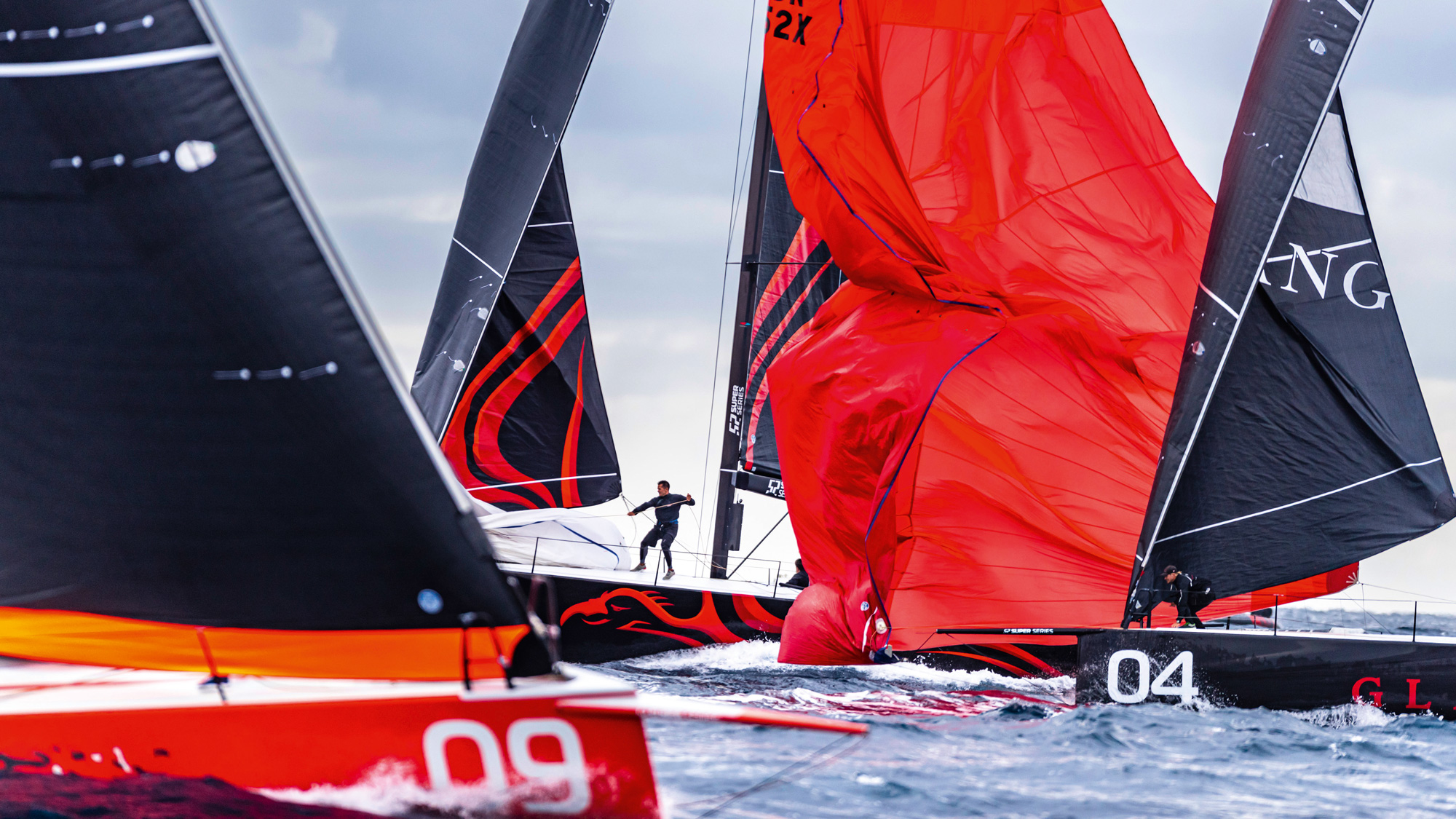Being able to sit in a ‘thin’ lane upwind and make gains on boats around you is a skill worth working on. TP52 helmsman and Olympic gold medallist Šime Fantela explains how to Andy Rice.
When you’re competing in a big fleet, it’s not the winning races that marks out the great from the good. It’s the ability to bounce back from bad positions and find a way through the fleet into the top 10. One of the key skills is the ability to survive in thin lanes when there are boats tight to windward and to leeward of you. It’s what all of us have to do out of a busy start line, but lane-holding is a great skill for further up the race track too when you’re trying to grind through the traffic.
We ask Olympic gold medallist helmsman Šime Fantela about how he and the rest of the crew in top TP52 teams like Bronenosec or Provezza work at surviving and thriving in thin lanes on perhaps the most demanding and closely contested keelboat racing circuit in the professional world, the 52 Super Series. Here are Šime’s best tips on how to go fast in a thin lane.
Stay positive
Psychologically it can be very challenging to be sailing in a confined space with boats on either side of you. Generally the boat that manages to sail at optimum VMG for longer than the rest of the fleet has the best chance of getting to the windward mark in first place, or at least in the first few. So when you’re sailing in a thin lane, don’t start adjusting controls or altering your steering too much from what you’d normally do. It’s easy to get psyched out before the other boats are actually giving you bad air.
Aside from lots of real-world racing experience, the best way is to practise living in a thin lane in your tuning and training sessions.
Article continues below…
5 expert tips to improve your tacking
While a tack is one of the most fundamental manoeuvres, it’s also hard to execute well. The more crew on…
5 expert tips for leeward mark roundings
The leeward mark is one of the biggest pinch points on the race course, with the opportunity for huge gains…
Involve the team
It shouldn’t all be down to the helmsman. Everyone needs to know what you’re aiming to achieve at any given moment. The tactician should be calling your speed and progress relative to the boats to windward and to leeward of you. The helmsman needs to get all the information he requires without being tempted to look around.
Steering is only one part of the speed equation. Make sure everyone is in the comms loop. The mainsail, headsail and backstay trimmers all need to work with the helmsman to either point up for height, foot for speed or maintain normal VMG. As helmsman, you need to tell the rest of the team what you’re feeling through the helm and if you feel like you’re potentially on the edge of stall. Then tell them when you’re steering down to re-accelerate and reload the sails so the mainsail trimmer knows when to ease for some twist until you can feel the rudder getting its grip back.

Photo: Carlo Borlenghi/Rolex
Speed in the bank
When you have a window of opportunity – some flat water, a good puff of breeze, or one of the other boats dropping back slightly – build the speed and get it in the bank.
Accelerate and go for a speed build for as long as possible. It’s useful momentum to carry you through the difficult moments further up the track, maybe a bad set of waves or a lull.
Have someone constantly watching and calling the conditions that are about to reach you, if you’re about to hit a bad set of lumpy waves or a flatter patch, as well as calling the gusts and the lulls.
Take the pain
Sometimes it’s worth living with some bad air and keeping going for a bit longer. For example, racing in Palma tends to be a ‘go left’ race course, so you want to do everything you can to stay on starboard tack for as long as possible. But in situations like these you also need to understand the manoeuvre loss of your particular type of boat. If your boat loses very little through the tacks then it might be worth hitching out early – as soon as you feel you’ve lost your lane – and going for two quick tacks to get back on starboard again but in clearer air.
However, if the speed loss through manoeuvres is high, typically in a fast catamaran for example, then it could be worth living in a compromised lane for a bit longer. It’s really hard to set a rule of thumb for this. This is where experience comes in, to tell you when to persist with a thin lane and when to cut your losses.
 If you enjoyed this….
If you enjoyed this….
Yachting World is the world’s leading magazine for bluewater cruisers and offshore sailors. Every month we have inspirational adventures and practical features to help you realise your sailing dreams.Build your knowledge with a subscription delivered to your door. See our latest offers and save at least 30% off the cover price.






